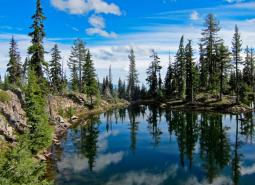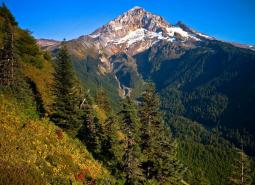
Overview
- Species Common Name Oregon Shoulderband
- Species Scientific Name Helminthoglypta hertleini
Ecoregions

Klamath Mountains
The Klamath Mountains ecoregion covers much of southwestern Oregon, including the Umpqua Mountains, Siskiyou Mountains, and interior valleys and foothills between these and the Cascade Range. The Rogue watershed has the largest population of any coastal watershed in Oregon (Jackson County, Josephine County, and a portion of Curry County). Several popular and scenic rivers run …

West Cascades
The West Cascades ecoregion extends from east of the Cascade Mountains summit to the foothills of the Willamette, Umpqua, and Rogue Valleys, and spans the entire length of the state of Oregon. It is largely dominated by conifer forests, moving into alpine parklands and dwarf shrubs at higher elevations.